A City Break in Limoges
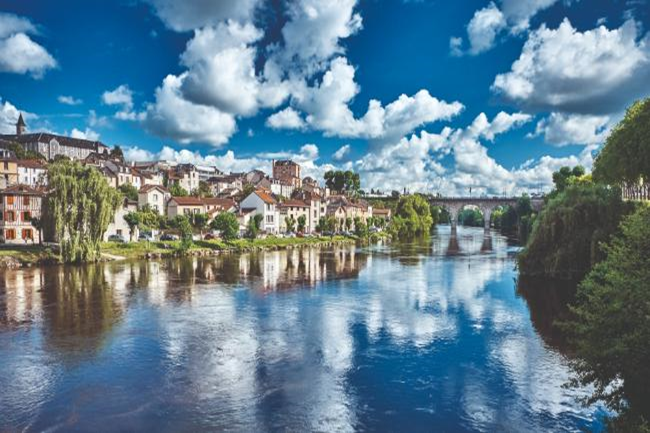
Limoges is all too often neglected by visitors in favour of more famous spots on the tourist trail, but it is a place rich with art and history whose treasures are very much worth unearthing.
If cities had personalities, Limoges would be the next door neighbour sort – the type you might pop round to see to borrow a cup of sugar but then end up staying for hours because it turns out they have some rather interesting stories to tell.
Despite its pretty centre with its lovely half-timbered houses and historic churches, Limoges isn’t really on the tourist radar. It has no major wine appellations like Bordeaux, no grand châteaux like the Loire Valley, no major industry like Toulouse… in fact, its only real claim to fame is its porcelain. Yet, dig a little under the surface and you will find there is something very special about this city in the heart of Limousin.
The most beautiful train station
Limoges lies in the TGV void between Bordeaux and Lyon, so the train from Paris takes a slow but beautiful three hours through the gorgeous countryside, which, when travelling in the right season, includes fields of green pasture and bright yellow flowers of rapeseed. On arrival, I am greeted by France’s most beautiful train station, as voted for by the nation in 2022.
First opened in 1929, Limoges-Bénédictins train station is a sight to behold. Named after the Benedictine monastery that was here, along with a leprosarium next door, its façade is a blend of neo-classicism, Art Nouveau and Art Deco. The domed exterior and its clock tower is akin to a beacon, while inside, the concourse is elegantly sculpted, with each corner of the ceiling featuring a goddess representing the four French provinces served by the Paris-Orléans railway company: Limousin, Brittany, Touraine and Gascogne. Limousin is, of course, carrying a porcelain vase, Limoges’s most precious commodity.
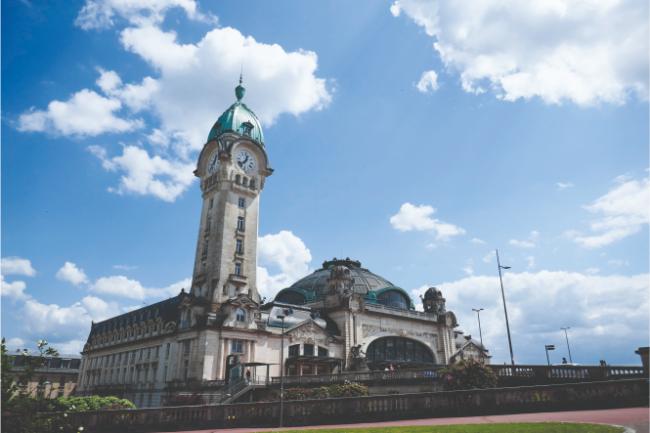
© AmyMcPherson
Precious white gold
Since the 18th century, when kaolin clay, one of the main ingredients of porcelain, was found in the nearby town of Saint-Yrieix-la-Perche, Limoges has been synonymous with the pure white, almost translucent pottery so precious that at the height of its popularity it was dubbed ‘white gold’. The porcelain trade brought with it a period of huge wealth and status for the city and a walk around the historic quarters of Limoges today reveals clues as to this rich heritage.
Les Halles Centrales, the covered market in Place de la Motte, is just one example of the use of porcelain in the everyday construction of Limoges. Built in the 19th century, it is decorated with 328 porcelain panels representing the food for sale inside the market, such as poultry, meats, fish and fruit, most of which are still being enthusiastically sold inside the bustling market hall today.
Next, I make my way towards the Mairie de Limoges, where the great fountain in front of the town hall is exquisitely decorated with porcelain, adding much colour and grace to the already ornamental street structure. The largest porcelain collection from Limoges is to be found at the Musée national Adrien Dubouché, or watch how porcelain is produced for yourself at acclaimed manufacturer Bernardaud, which has a factory and boutique in the city.
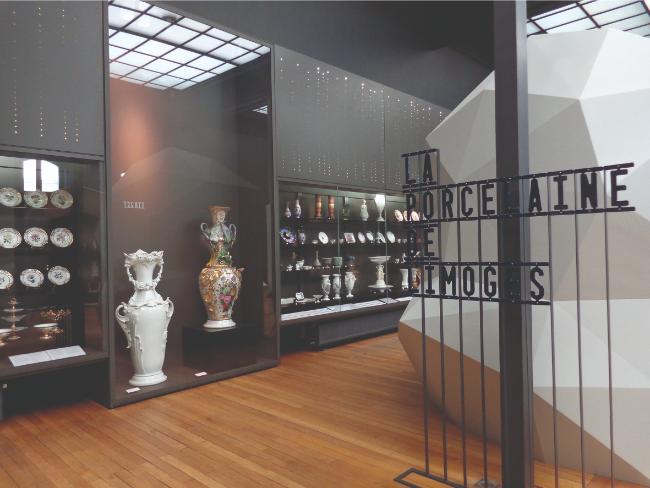
© AmyMcPherson
Lesser known treasures
Few outside Limousin know of Limoges’ other important export: enamel. At the Musée des Beaux-Arts, I learn that enamel was, in fact, the original treasure of Limoges until porcelain came along and usurped it. Enamel decorations have been made here for centuries, especially during the 12th century when religious pieces which were much sought after, and during the French Renaissance when enamelled objects became fashionable among the wealthy.
Housed in a former Episcopal Palace, the museum has a collection of over 600 enamel pieces, tracing the various styles from its very beginnings to the modern day. Today, the enamel works are mostly commissioned as private artistic pieces, with those made in Limoges still prized highly among collectors.
Other than the enamel collection, the Musée des Beaux-Arts is well worth a visit for its fine collection of art and Egyptian antiquities. Of particular of interest is the section on the city’s history, where I learn that Limoges, then called Augustoritum, was an important Roman city with an amphitheatre and a forum, although sadly neither has survived. Pont Saint-Martial, across the Vienne, is the closest you will get to the city’s Roman past today: the bridge was built in 1215 to replace the original Gallo-Roman bridge which had been destroyed in 1181, and its piers stand on the original Roman granite bases.
A walk around the ancient centre of this Ville d’Art et d’Histoire reveals a fascinating past. The city grew up out of two historic hearts – La Ville Haute, the former district of the Château des Vicomtes, and La Cité, the area surrounding Saint-Étienne cathedral which was ruled by the Bishop. This division affected the way the city developed over the years, as can be seen by looking at a map of Limoges today.
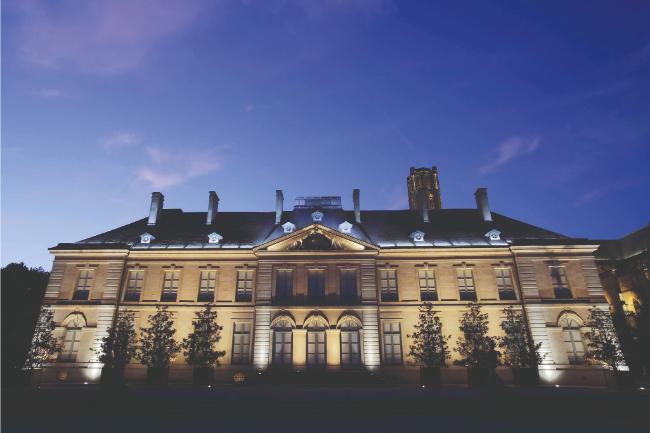
© Official Facebook page
A butcher’s world
Following the narrow Rue du Temple, so-called because it was owned by the Knights Templar in the Middle Ages, my wandering around the historic centre of Limoges took me to the Quartier de la Boucherie (Butchers’ Quarter), a small network of cobbled alleyways towered over by old half-timbered houses. Here was a community of butchers whose Guild was so powerful, they were able to influence both the Government and Church alike. Today, this district is mostly a lively assortment of craft shops, restaurants and trendy cafés. For a taste of the past, pop in to La Maison de la Boucherie where you can learn all about the life of the butchers and their families who sold their produce on the ground floor while they lived upstairs; they even slaughtered on-site and dried animal skins in their open attics. Tools, pictures, writings and other objects from the era bring this close-knit community to life.
Do also pop in to the small Chapelle Saint-Aurélien, where you will find a cultural curiosity in the form of a seemingly conventional wooden statue of the Virgin Mary holding the baby Jesus. Look closely and you’ll notice that Jesus is eating a lamb’s kidney. Traditionally, kidneys were offered to children visiting the butchers’ shops with their mothers to keep them amused.
Eat well in Limoges
Obviously with butchery such an important part of its past, one of the most popular festivals in Limoges is La Frairie des Petits Ventres (Festival of Little Stomachs), which takes place every October and celebrates the memory of the Guild of Butchers and the region’s cuisine, with some recipes dating back to the Middle Ages. Other than the more mainstream dishes of meat stew, potato pie and chestnut puddings, you could find yourself chewing on lamb’s kidneys, testicles and tongue. Fear not, though, if you are on the squeamish side: there are plenty of great cafés and restaurants to choose from in the city.
Alongside the traditional bistros, an increasingly diverse population has led to a proliferation of dining options from various world cuisines, as well as an uptick in vegetarian and vegan venues. I choose to dine in one of the city’s more high-end tables, the stylish Martin Comptoir, on Rue Lansecot close to the historic Butchers’ Quarter. It is, I am delighted to say, yet another of Limoges’s many treasures.
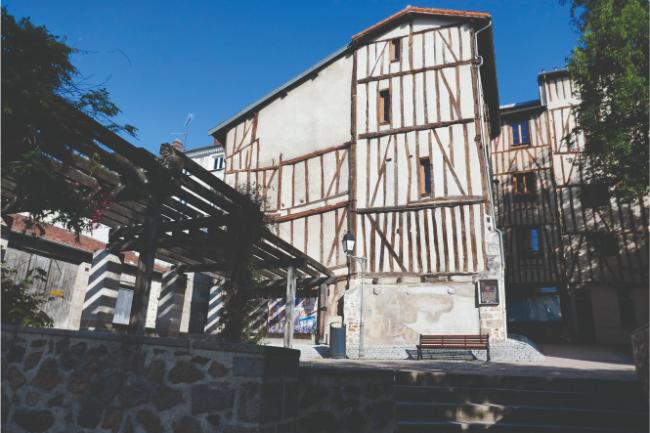
© AmyMcPherson
LIMOGES ESSENTIALS
GETTING THERE
Limoges Airport has direct flights from seven UK airports. A taxi from the airport to Limoges-Bénédictins train station takes 20 minutes at the flat rate of €28 (days) or €38 (nights, Sundays and bank holidays). The public bus no. 26 departs from the airport three times a day.
WHERE TO STAY AND EAT
Centrally located on the edge of Limoges’ historic city centre, ibis Limoges Centre is an efficient and economical option for those who like everything within walking distance.
Traditional Limousin cuisine can be very hearty, but there are some great modern options available for those seeking finer things on their plates. The Michelin-listed Martin Comptoir offers fine bistro dining with a contemporary flair, and is very popular. Be sure to book in advance.
TOURIST INFORMATION
For more information on Limoges and the surrounding area, visit the excellent Destination Limoges Tourist Office (12 Bd de Fleurus). Here you can also use the free wifi and shop for locally crafted souvenirs.
A Limoges City Pass gives you unlimited access to museums, swimming pools, the zoo and transport around Limoges, as well as free rental of the city’s fleet of e-bikes. Passes are available for between 24 hours and 72 hours and can be purchased from the tourist office.
From France Magazine
Lead photo credit : © Shutterstock
Share to: Facebook Twitter LinkedIn Email
More in city break, Limoges, short break
Leave a reply
Your email address will not be published. Required fields are marked *




REPLY